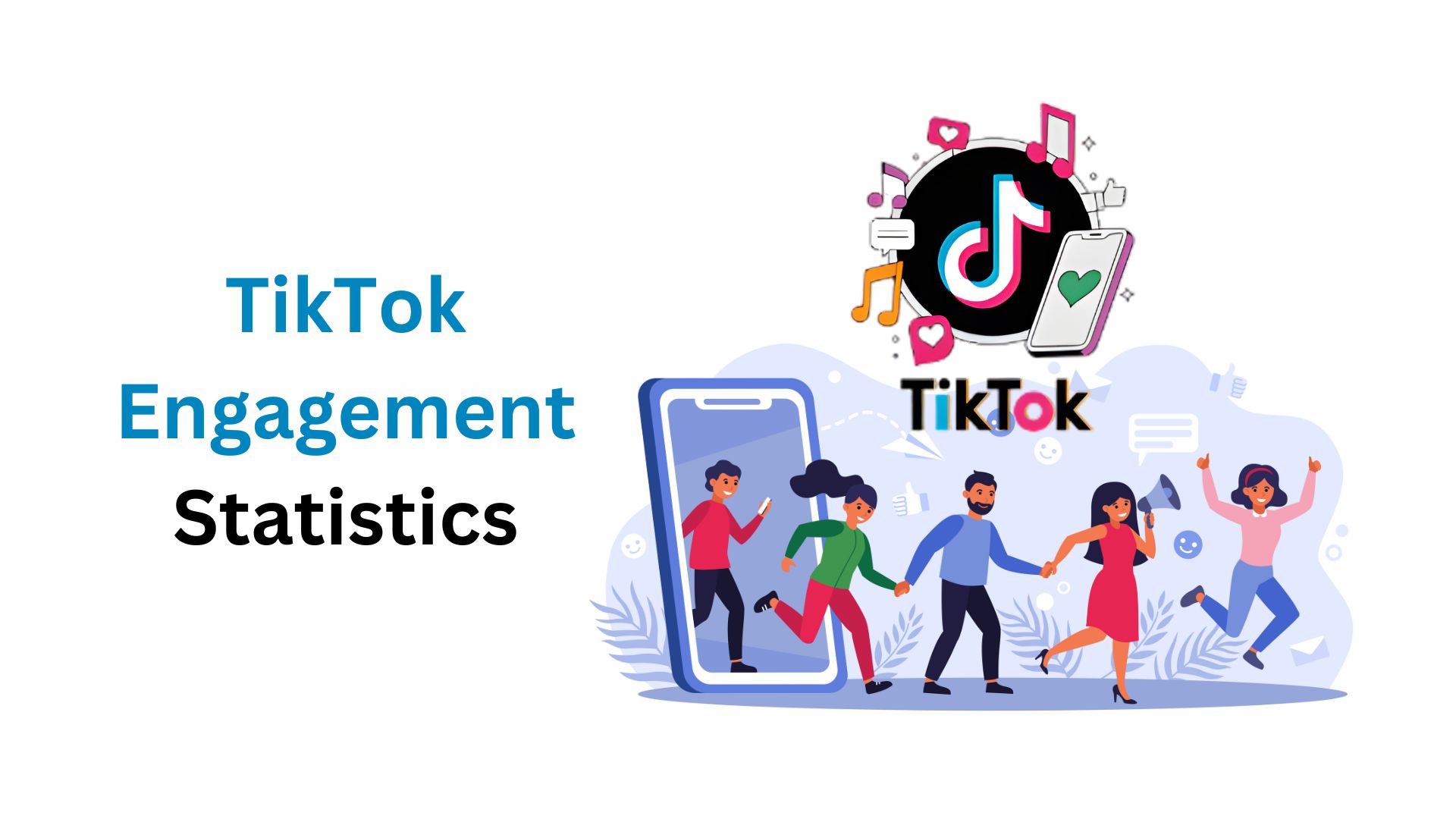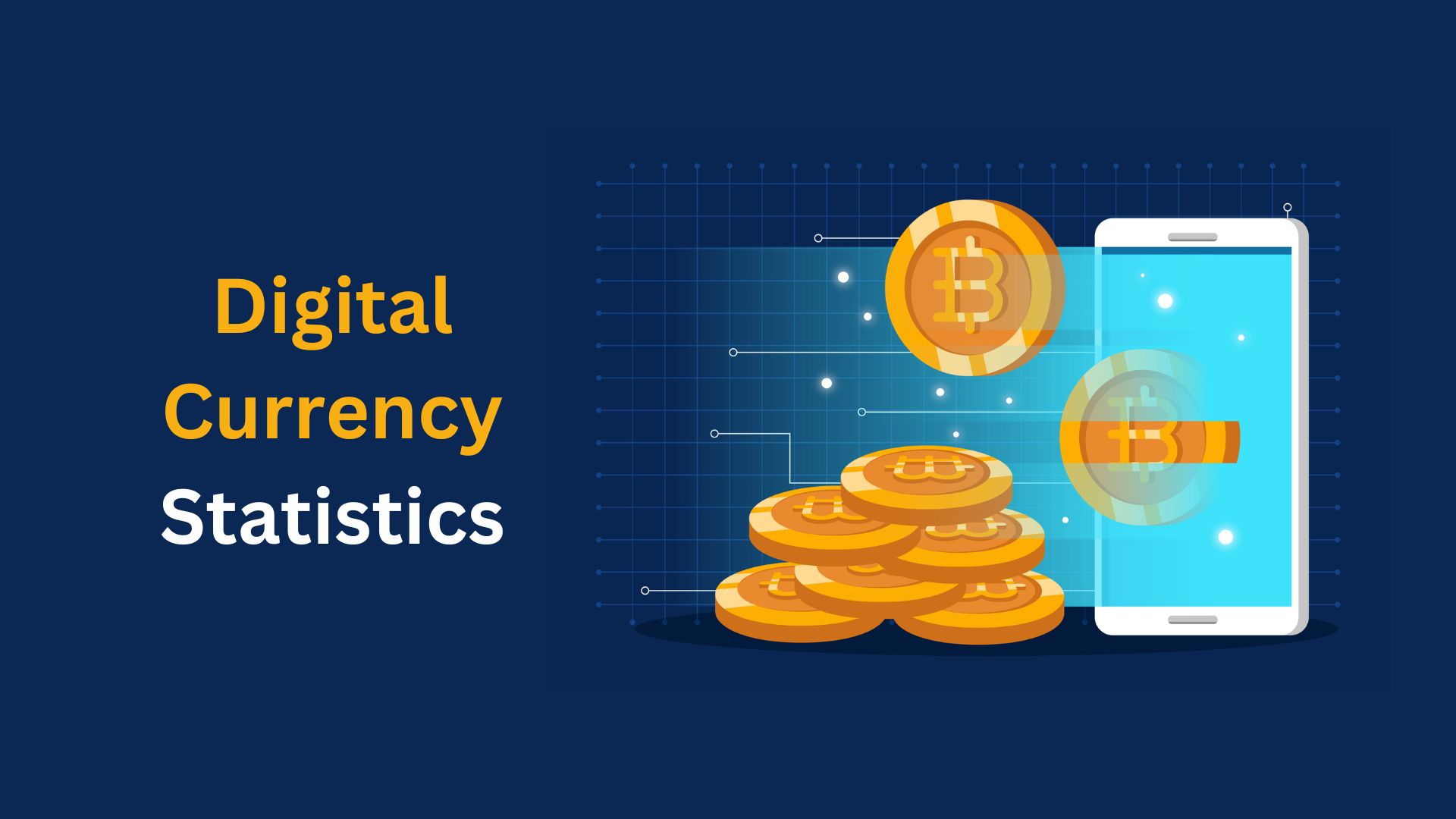Two Factor Authentication Statistics By Customers, Industry, Technology, Demographic, Usage And Facts (2025)
Updated · Sep 24, 2025
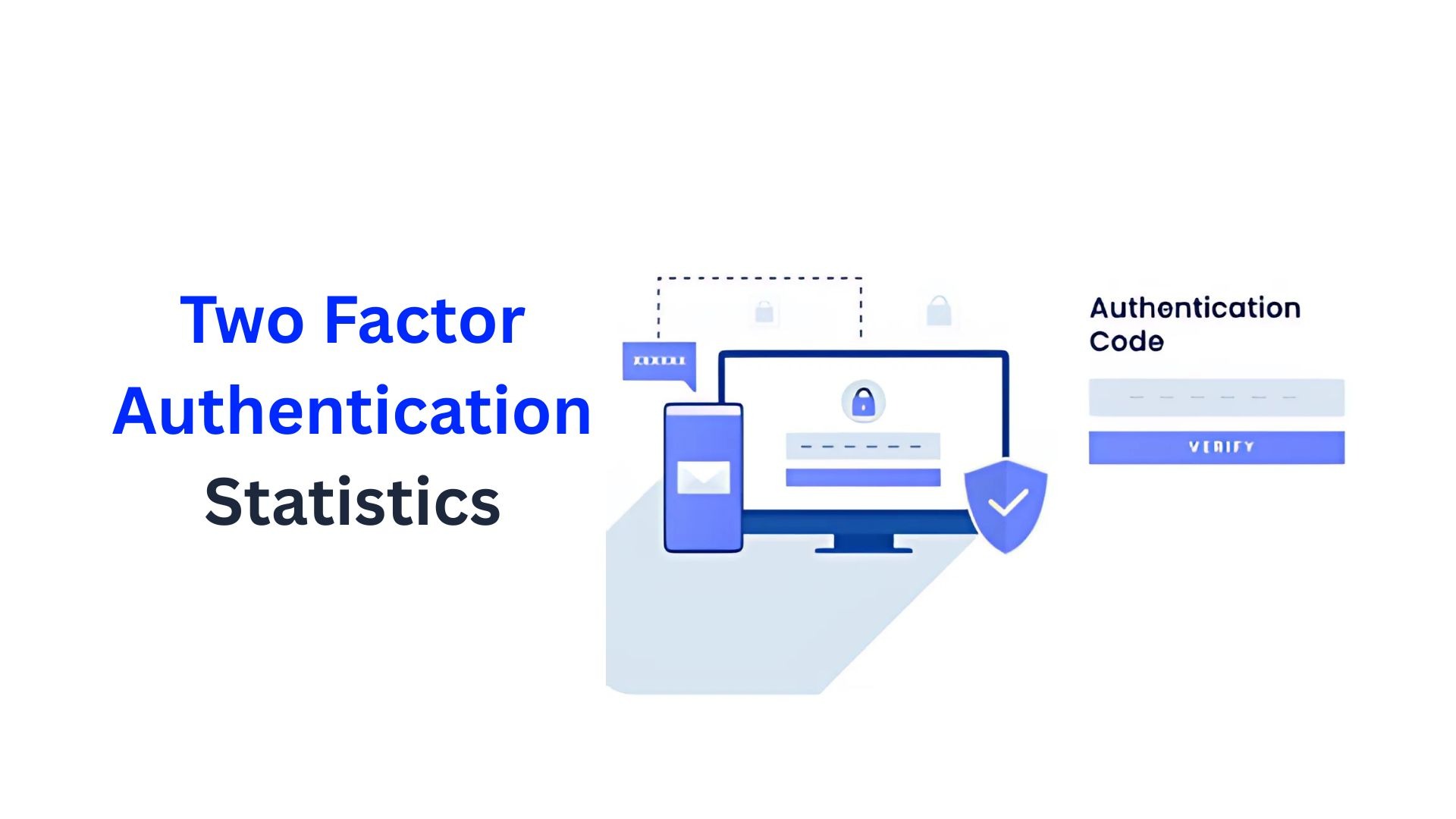
Table of Contents
Introduction
Two Factor Authentication Statistics: Cybercrime is changing rapidly; the attackers have the time of the month with password thefts. Here comes the role of two-factor authentication (2FA): it sets up a truly required second line of defence with SMS codes, authenticator applications, or biometrics, which was once reserved for spy movies. If a password is obtained by an attacker, the 2FA locks the hacker out.
With a considerable user base in millions, nearly one-third of users apply 2FA in all their apps and usage. Being among the top global concerns for businesses, 2FA happens to be one of the simplest and savviest ways to safeguard data. This article will show the key highlights of two-factor authentication statistics.
Editor’s Choice
- Nearly a third of users secure all their apps with 2FA, displaying rising adoption.
- Industry adoption leads with education (33%), followed by banking/finance (32%), and telecom (31%), while software and government sit at 27%.
- The 2FA market bears a dominant presence by RSA SecurID, Yubico, and Microsoft, holding a user-share of over two-thirds.
- The U.S. leads the world with 2,496 users of 2FA tools, far outstripping others.
- Over 40% of the developers globally focus on focal areas for increasing 2FA adoption, and one-third on strengthening password security.
- Increasing 57% use multi-factor authentication; only 19% of government offices prefer physical tokens.
- 80% of security breaches could have been prevented through the use of 2FA; still, 38% of big firms neglect to use it.
- But fraud originates mostly from bad or stolen passwords (81%) or from phishing (47% effectiveness through mail).
- 2FA helps block 100% of automated bot attacks, reduces unauthorized access, and preserves customer trust.
- In breach cases, the average cost of devastating data is US$3.86 million, whereas the implementation of 2FA is pocket-friendly and reputation-protecting.
General Facts
- Significant growth was witnessed in 2FA adoption worldwide by 2024. Around 67% of companies had 2FA implemented across their entire systems as opposed to 56% in 2022. Of internet users, 52% had 2FA enabled on at least one account, which was a 10% increase from 2023.
- Talking of preferences, around 41% of users were going for SMS-based verification, with 28% using authenticator applications such as Google Authenticator or Authy.
- The biometric method of fingerprint and facial recognition had surged to 21% in 2024 from 12% in 2022.
- Two-factor authentication makes your accounts 999 times less likely to be compromised than just by a weak password.
- Two-factor authentication stopped 42% of cyberattacks in 2024, which caused companies to lose an estimated US$14.7 billion in revenue.
- In contrast, the average cost of implementing two-factor authentication was a modest US$15 per user per year, which made a data breach cost of US$3.86 million seem like a small amount.
- Smaller businesses opted for cheaper alternatives, with 58% reporting discounted cybersecurity insurance premiums that correlated with their use of 2FA.
- Not all are loving 2FAs; high levels of inconvenience caused 33% of users to avoid them.
- Businesses also found that implementation costs were high in 19% of instances, and employees resisted the implementation 22% of the time due to perceived complexity.
- Adoption is also marked by company-size segmentation; preferentially, very small companies with fewer than nine employees have 2FA instituted in 885 companies, while this figure is 511 for those with 20–49 employees.
- According to the Cyber Security Breaches Study, about one in three organizations has mandated 2FA despite its benefits.
- Retail stands to gain enormously from 2FA adoption, since it secures access to transmission via remote desktops and mobile computers to networks and more from a customer data perspective.
Use 2FA By Industry
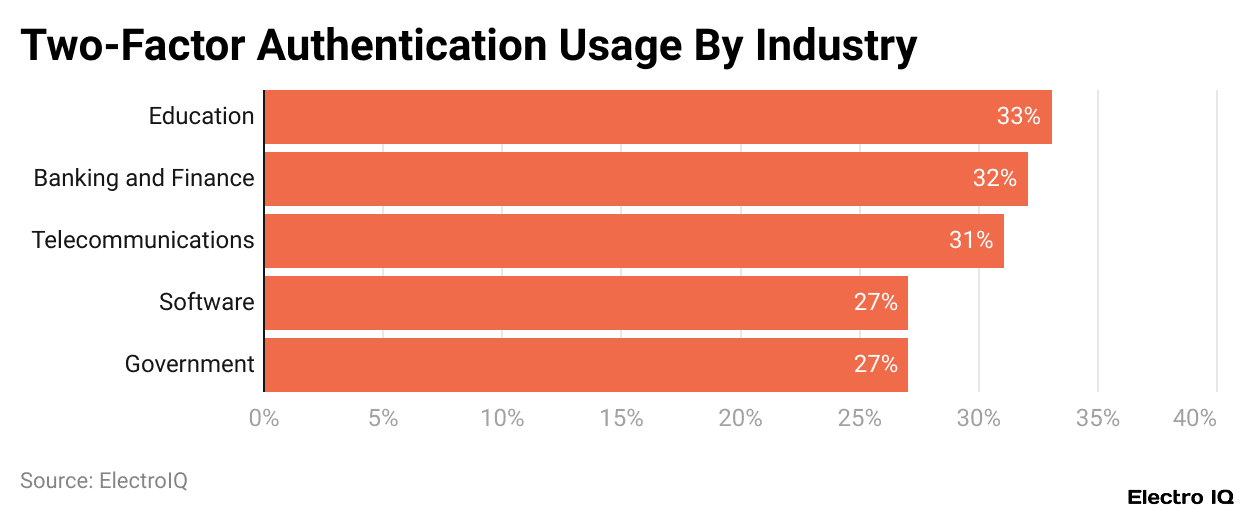
(Reference: enterpriseappstoday.com)
- As per Enterprise App Today, two-factor authentication statistics show that securing sensitive information and digital assets stands amongst the most formidable challenges facing the world of interconnectivity.
- Foremost among a host of 2FA applications is the extra layer of protection attached after the primary password, thereby minimizing unauthorized access to a system.
- However, practically every industry still has sectors putting different levels of 2FA applications, depending on the highest level of security demanded.
- Education stands highest with 33% of employees using 2FA, subject to a high degree of vulnerability.
- Banking and finance come second, with 32% of their employees employing 2FA to protect highly sensitive financial data.
- Next is the telecom industry at 31%, having the safeguarding of customer data and networks within its purview.
- Both the software and government sectors are tied with a 27% adoption rate, wherein software companies are focusing on secure development and user accounts, and government agencies emphasize safeguarding classified information.
- In the software industry, RSA SecurID leads with 42.89% as of April 2023. The U.S. leads the world, wherein 47.13% of the businesses implement 2FA software, followed by the UK at 13.54% and the Netherlands at 11.20%.
- Adoption also varies by company size—885 very small companies with fewer than nine employees use 2FA, compared to only 511 companies with 20–49 employees.
- Despite its benefits, only about one in three organizations has mandated 2FA, according to the Cyber Security Breaches Study.
- Retail stands to gain significantly from 2FA adoption, as it helps secure access over remote desktops and mobile devices, protecting networks and customer data more effectively.
Top 5 2FA Technologies In 2025
| Company Name | Market Share (Est) | Customers |
| RSA SecurID | 30.53% | 1569 |
| Yubico | 22.49% | 1156 |
| Microsoft Azure Multi-Factor Authentication | 18.95% | 974 |
| Google Authenticator | 9.44% | 485 |
| Clef | 6.50% | 334 |
| Others | 12.10% | 622 |
(Source: 6sense.com)
- Currently, more than 5,140 companies use two-factor authentication (2FA) tools, with the majority of the market split between a handful of providers.
- RSA SecurID leads the market with a 30.53% share with 1,569 customers.
- Yubico follows with 22.49% and 1,156 customers, Microsoft’s Azure Multi-Factor Authentication makes up 18.95% with 974 customers, Google Authenticator has a 9.44% share with 485 customers, and Clef holds 6.5% with 334 customers.
- The smaller providers make up the remaining 12.1% with 622 customers. This shows how RSA, Yubico, and Microsoft comprise more than two-thirds of the 2FA market.
Customers By Geography
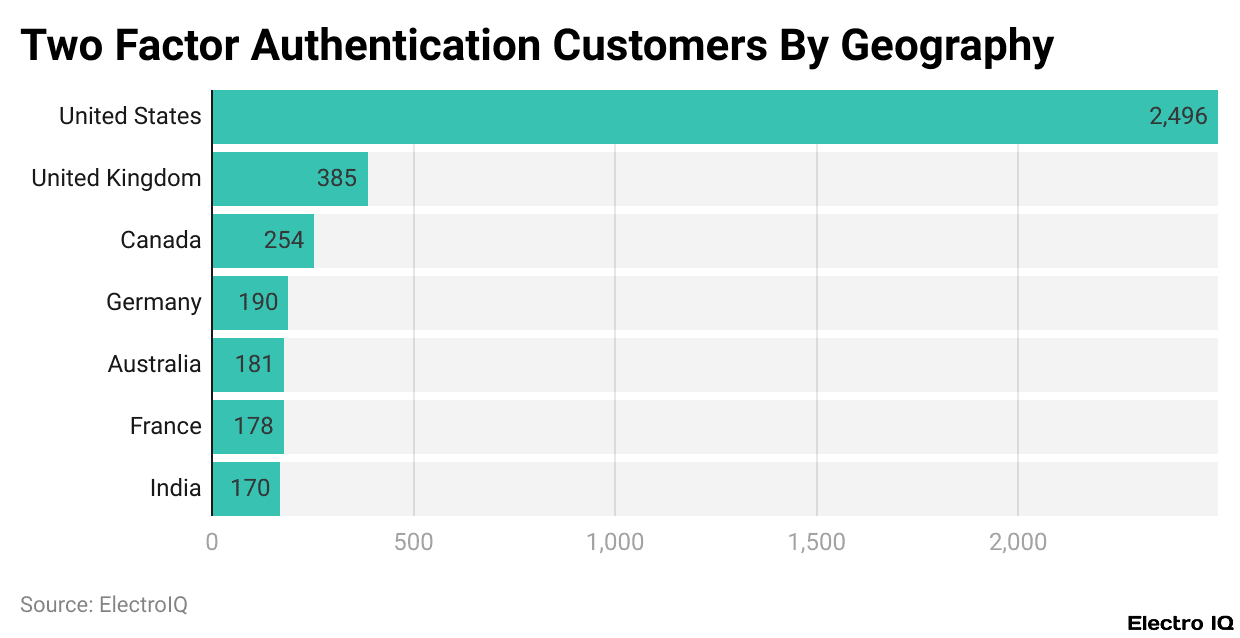
(Reference: 6sense.com)
- The client base is very much divided for two-factor authentication tools, with the U.S. leading with 2,496 users, far ahead of all other regions.
- The U.K. stands in the second place with 385 customers, while Canada takes the third with 254. Germany comes next with 190, indicating steady acceptance in Europe.
- Australia and France are practically tied for the fifth spot with 181 and 178 customers, respectively, reflecting balanced levels of uptake in these states.
- Next comes India, with 170, marking its presence in the security sphere. North America leads in adoption, with Europe and the Asia-Pacific territories marking their presence in smaller proportions.
Top Authentication Priorities Worldwide
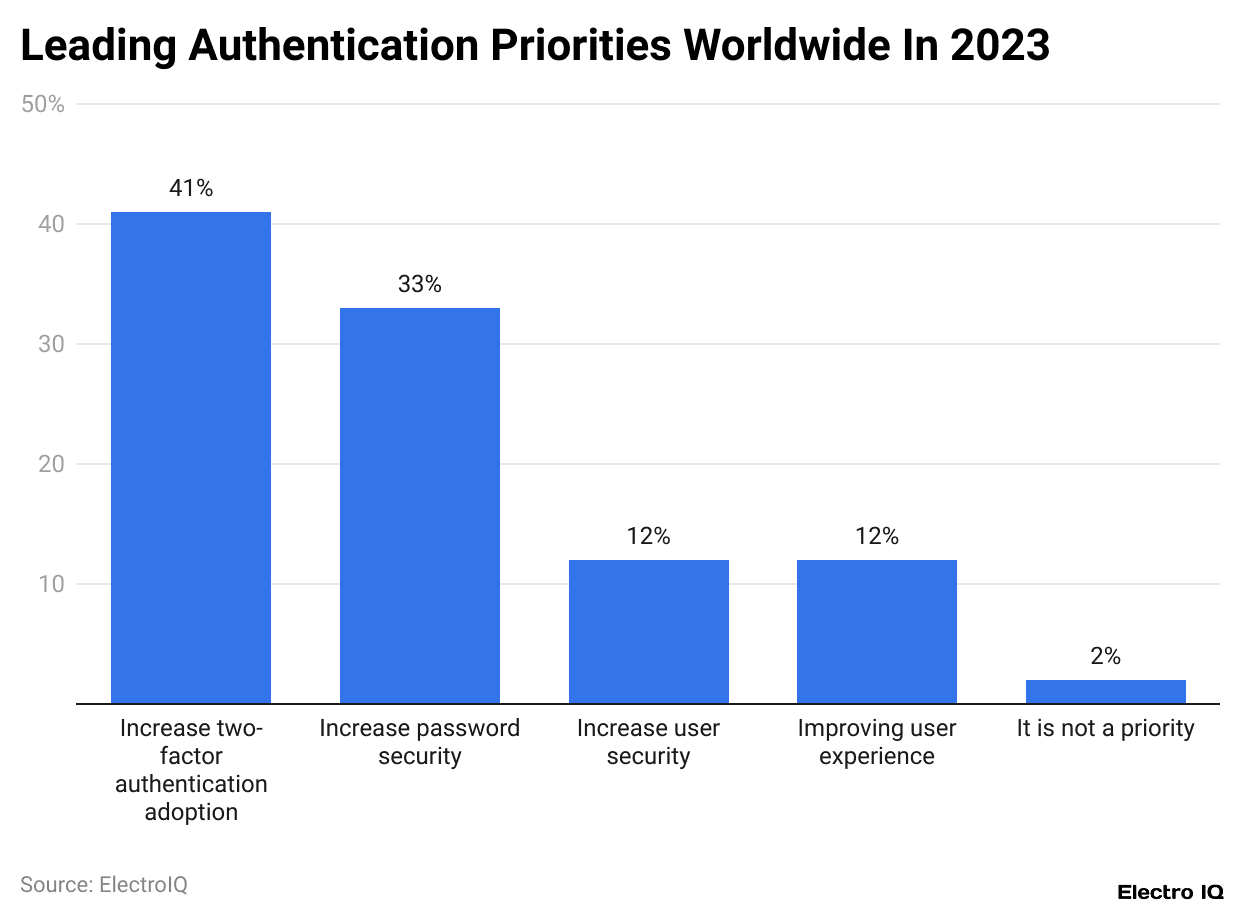
(Reference: statista.com)
- Statistics for two-factor authentication in 2023 revealed that more than 40% of developers worldwide viewed increasing the adoption of 2FA as the number-one goal among their authentication priorities.
- About one-third of respondents mentioned reinforcing password security as their main concern instead.
- Far fewer, around 2%, said that authentication is simply not a priority for them, which shows that while most developers consider security paramount, a few still put it at the bottom of their agenda.
Usage By Age

(Source: withpersona.com)
- Use of 2FA varies with age groups: in the different age groups, 53% of those 18–29, 59% of the 30–49 peers, and 49% of persons aged 50–64 carry it into practice.
- Among companies, 57% use multifactor authentication.
- On the other hand, 19% of government agencies use physical tokens as part of their physical two-factor authentication.
- Some studies estimate that around 80% of security incidents could be avoided through 2FA, yet 38% of large companies still do not implement it.
- Frauds resulted due to either weak or stolen passwords, constituting 81% of breaches.
- Phishing is a considerable percentage too, with 47% of phishing attempts being successful; great, as 74% of the U.S. companies found a hit with the attempt.
- Along with that, 61% of employees reuse passwords across different platforms and services.
- Phishing victims update their passwords 53% of the time, whereas 43% of U.S. citizens confess to sharing passwords with other people.
Advantages
- Two-factor authentication offers broad protective measures for associations by lessening the chances of unwanted access, especially under circumstances when users share passwords, fall victim to phishing, or encounter any data breaches.
- Google cited 2FA as being able to stop all automated bot hacks, hence the utmost defense.
- Furthermore, 2FA helps secure businesses in their remote working positions, ensuring employees can log into the company system from anywhere.
- Data breaches will set you back US$3.86 million on average in 2020; these breaches also compromise brand trust.
- Nearly 49% indicated that they would not sign on to an online service that had previously experienced a cyberattack.
- Hence, by reducing unauthorized access, 2FA helps to protect customer data and build trust.
Limitations of 2FA
- Although advantageous, two-factor authentication does not serve as an impenetrable security solution. It cannot eradicate every kind of fraudulent ticket imaginable.
- Sometimes, users lose their tokens; sometimes biometric solutions, such as facial recognition, go down the drain, if you prefer. Magneto can do it, and maybe a deepfake too.
- Another thing is that 2FA does not tell you if the person using the account is actually the authorized user.
- In general, the system assumes that trusted devices are available to and uploaded only by legitimate account owners, as this may not necessarily be true.
- A scenario is where a hacker gains access to a SIM card linked to the account; only that breach would grant access.
- This implies 2FA does improve security, but it should be paired with other security measures for the very highest protection.
Future of 2FA
- The maximum protection under two-factor authentication is in front of authenticator apps like Google Authenticator or Authy, given that codes received via SMS can also be intercepted.
- It’d be nice if everyone with 2FA enabled on their work accounts also enabled it on their personal email, banks, and social media.
- It is always good to have a backup should they lose their phone or security key, and if this is coupled with strong, unique passwords, they stand a much better chance of being protected.
- From hereon, basically most organizations are looking beyond just MFA to incorporate an additional factor like facial recognition alongside passwords and authenticator codes that provide arguably the strongest protection to extremely sensitive industries.
Conclusion
Two Factor Authentication Statistics: The need for security layers has become much more relevant in an age in which cybercrime is on the increase. Combining passwords with second-factor elements such as SMS codes, authenticator apps, or biometric verification, 2FA greatly reduces the risk of unauthorized access and breach. It is increasingly being adopted across industries, especially in education, finance, and telecom, while technology heavyweights such as RSA, Yubico, and Microsoft continue to reign.
Further, despite some limitations such as SIM swaps or lost tokens, 2FA remains extremely cost-effective, preserves sensitive business data, and adds to customer value. Multi-factor authentication (MFA) will see further strengthening of security in scenarios where there are high risks and for users or industries.
FAQ.
2FA is a security process that requires users to provide two types of identifications to access an account. This usually can be a password plus a second factor such as an SMS code, an authenticator app, or biometric verification, which thus adds the heavy layer of protection.
The 2FA blocks 100 percent of automated attacks by bots and drastically limits phishing and password-related breaches. Studies indicate that 80 percent of breaches could have been avoided if 2FA had been on the victim’s side.
Education rings the bell at 33% adoption, followed by banking/finance at 32% and telecommunications at 31%. Software and government, on the other hand, have registered 27% adoption rates, showing an underlying culture toward protecting data highly.
2FA can’t protect you against all kinds of fraud. Certain forms of risks that can be posed to it include SIM-swap attacks, lost tokens, and a few bypass methods against biometrics. There’s the big assumption that only the legitimate user of the system has access to the listed trusted devices, which is not always true.
Organisations are moving toward multi-factor authentication (MFA), consisting of passwords, authenticator codes, and biometrics such as facial recognition. MFA offers stronger security capabilities, especially in certain industries, remote work, and for personal accounts.

I hold an MBA in Finance and Marketing, bringing a unique blend of business acumen and creative communication skills. With experience as a content in crafting statistical and research-backed content across multiple domains, including education, technology, product reviews, and company website analytics, I specialize in producing engaging, informative, and SEO-optimized content tailored to diverse audiences. My work bridges technical accuracy with compelling storytelling, helping brands educate, inform, and connect with their target markets.

